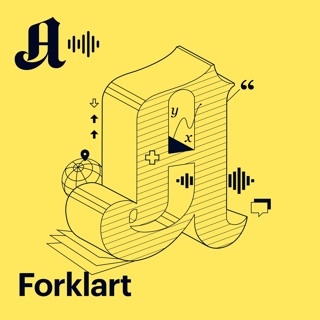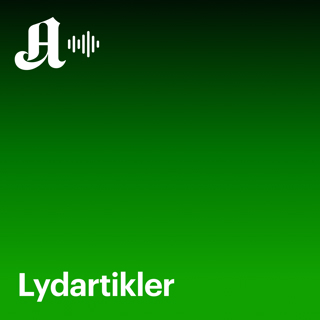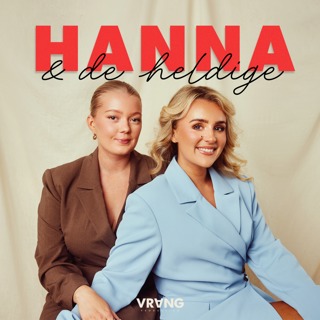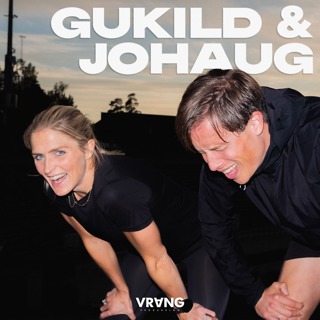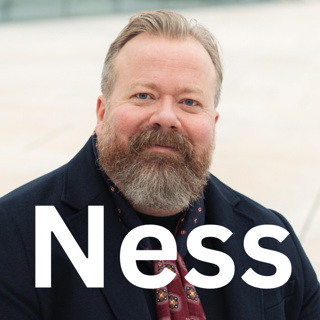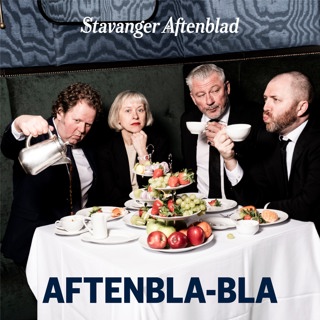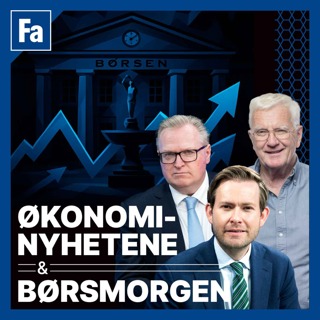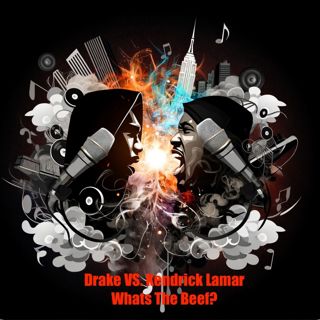
LeBron James and Kendrick Lamar: Bridging the Gap Between Sports and Music
The realms of sports and music often intersect, creating a rich tapestry of influence and support. Notably, LeBron James, one of basketball's most eminent figures, has consistently shown appreciation for the work of rapper Kendrick Lamar. This overlap between athlete admiration and musical talent illustrates the cultural bridge that connects different forms of entertainment.LeBron’s connection to Kendrick Lamar is more than just that of a fan; it highlights how athletes can use their platforms to endorse and elevate artists. LeBron has been seen dancing to Lamar’s hits and using his social media presence to praise the rapper’s albums, thereby introducing Lamar's music to his vast audience. This dynamic also extends to how music can inspire and energize athletes before games or during training sessions, further showcasing the symbiotic relationship between these two industries.Moreover, the influence runs deep, as artists like Lamar occasionally reference sports and athletes in their lyrics, enhancing the connectivity and revealing mutual respect and inspiration between these domains. This interaction enriches fans' experience, providing a multidimensional appreciation for both sports figures like LeBron James and music icons like Kendrick Lamar.This content was created in partnership and with the help of Artificial Intelligence AI
30 Nov 20241min

Kendrick Lamar and Drake's Feud: A Clash of Artistic Styles and Industry Dynamics
The feud between Kendrick Lamar and Drake is one of the most talked about rivalries in the music industry, reflecting deep artistic competition. The disagreement gained a new layer when Questlove, the respected musician and frontman of The Roots, made critical comments about Kendrick Lamar during the height of the feud. This prompted a response from Top Dawg Entertainment’s President, Terrence "Punch" Henderson, who chose to defend Lamar publicly.Kendrick Lamar, a flagship artist for Top Dawg Entertainment (TDE), has been a critical figure in modern hip-hop, known for his lyrical depth and innovative music. Drake, on the other hand, hails from a more commercial background, with his work encompassing a broader range of pop and rap influences. The stark difference in their musical styles and approaches to artistry is often cited as a core reason for their ongoing rivalry.Questlove’s critique came at a time when tensions were particularly high, which added more fuel to the already blazing fire. Punch's intervention not only highlighted the loyalty within Lamar’s camp but also underlined the complexities of relationships and loyalties in the music industry. This feud, like many in hip-hop, offers a window into how competition and cooperation intersect in the music business, influencing music creation and artist relationships. It demonstrates how remarks from industry insiders and peers can resonate or inflame situations, often reflecting deeper personal and professional stakes.The discourse surrounding the Kendrick Lamar and Drake beef underscores the dynamic nature of the music industry, where artistic expressions and personal differences can both clash and coalesce, shaping careers and the music landscape.This content was created in partnership and with the help of Artificial Intelligence AI
28 Nov 20241min

Clashing Titans: The Captivating Rivalry Between Kendrick Lamar and Drake Powering the Evolution of Hip-Hop
Among the currents of the hip-hop world, the dynamic and ongoing rivalry between Kendrick Lamar and Drake is a fascinating narrative, reflective of both artists' immense talents and their unique positions within the genre. Despite their feuding, both artists have consistently excelled, pushing the boundaries of hip-hop and maintaining their influence at the pinnacle of music.Both Kendrick Lamar and Drake debuted around the early 2010s and soon became standout artists within the hip-hop scene. Kendrick, hailing from Compton, California, is known for his intricate lyricism, profound thematic content, and his ability to tell compelling stories through his music. His albums such as "Good Kid, M.A.A.D City" and "To Pimp a Butterfly" are critically acclaimed for their depth and complexity, tackling themes of racial injustice, personal struggle, and societal issues.Drake, from Toronto, Canada, brings a different flavor to hip-hop, mixing singing and rapping while leaning heavily on personal relationships and emotional vulnerability. His albums like "Take Care" and "Nothing Was the Same" have cemented his status as a hitmaker with a knack for creating catchy, emotion-driven music.The feud between Lamar and Drake is believed to have roots in their differing approaches to music and public personas, as well as competition for the top spot in the rap industry. While the two have not often addressed their rivalry directly, several tracks are rumored to contain subtle digs at each other. For instance, Kendrick's verse on Big Sean's "Control" in 2013, where he calls out a list of rappers, including Drake, set the tone for what many interpreted as a competitive challenge. Drake's responses have been less direct but discernible in songs like "The Language," where he appears to critique Kendrick's aggressive competitive streak.Despite their rivalry, or perhaps because of it, both Kendrick Lamar and Drake have continued to innovate and excel within their crafts. Their feud seems to fuel their drive for excellence and relevance in the fast-evolving music landscape. The competition has also been a point of engagement for fans and critics, adding an extra layer of interest to their musical releases and public appearances.In essence, the Kendrick Lamar and Drake feud epitomizes the competitive spirit of hip-hop, where verbal sparring and lyrical challenges are part and parcel of the genre's appeal. Both artists, through their individual journeys and mutual contention, highlight the diverse narratives and styles that make modern hip-hop a compelling field of artistic expression. As they evolve and continue to release music, the hip-hop community watches eagerly, not just for who might come out on top, but for how their rivalry will inspire their next artistic creations.This content was created in partnership and with the help of Artificial Intelligence AI
26 Nov 20242min

Rap Feud Speculation: Kendrick Lamar and Drake's Rumored Rivalry Fuels Hip-Hop's Creative Tension
In the landscape of hip-hop, feuds and lyrical battles have been a staple, shaping narratives and fostering intense rivalries that often drive artists to push the limits of their creativity. One such speculated instance in recent times involves rap giants Kendrick Lamar and Drake, although both have largely maintained a complex relationship that teeters between mutual respect and competitive tension.Kendrick Lamar, known for his deep lyrical content and powerful storytelling, is often hailed as one of the most influential voices in modern hip-hop. Drake, on the other hand, boasts a blend of rap and R&B with a commercial appeal that has earned him a place as one of the genre's top-charting artists. The dynamic between the two has been a subject of analysis and speculation among fans and critics.The specific line from Kendrick Lamar’s track "Euphoria," where he raps, “Cutthroat business, you got shit twisted / What is it?” was perceived by many as a direct jab at Drake, symbolizing a direct confrontational stance in the rap game. This interpretation stemmed from prior exchanges and lyrical subtleties where fans believe the artists addressed each other indirectly. In rap, such direct and indirect messages are common, serving not only as personal expressions but also as strategic moves in maintaining relevance and dominance in the industry.Both Kendrick and Drake have historically utilized the media and their music to possibly address or allude to one another, though rarely confirming such speculations outright. This ambiguity adds layers to their personas and music, inviting listeners to decode possible hidden messages.Moreover, these speculated feuds often fuel fan engagement, leading to debates and discussions that extend the lifespan of tracks and albums in public memory. While some of these confrontations might escalate into more visible disputes, others simmer quietly, evidenced only through lyrical digs and musical cues that keen listeners attempt to unravel.In conclusion, whether Kendrick Lamar's "Euphoria" line directly targets Drake or not remains a topic of speculation, but it is a testament to how rivalries in hip-hop go beyond simplesquabbles, shaping the music and the culture in profound ways.This content was created in partnership and with the help of Artificial Intelligence AI
24 Nov 20242min

Rap Rivals Clash: Kendrick Lamar and Drake's Captivating Feud
In the landscape of hip-hop, few events stir as much excitement and media frenzy as a feud between high-profile artists. This was precisely the case with Kendrick Lamar and Drake, two of the most influential figures in modern rap. The feud reached a peak when Lamar released a track that was seen as a direct shot at Drake, indicating a heated rivalry that captivated the attention of fans and critics alike.Kendrick Lamar, hailing from Compton, California, is known for his complex lyricism and deep thematic content, often exploring societal and personal issues. Drake, from Toronto, Canada, has a different style, known for his melodious rap and introspective lyrics that often discuss relationships and personal success. The contrasting styles of these artists have made them both highly respected in different sub-genres of hip-hop, attracting diverse fan bases.The tensions between them reportedly began due to competitive spirits and subliminal jabs in their lyrics, which fans and the media speculated about over the years. This speculated rivalry came to a head when Lamar dropped a track explicitly calling out Drake, marking a rare moment where the usually subtle jabs turned overt. The track was not just a display of lyrical prowess but also a strategic move in the chessboard of hip-hop rivalry, showcasing Lamar's readiness to defend his artistic integrity and reputation.Accompanying the song’s release was a piece of artwork parodying Drake's style, suggesting a mocking tone and further intensifying the feud. This artwork, resonating with the themes of confrontation in Lamar's lyrics, played a significant role in the visual narrative of the dispute.Fans of both artists reacted with a mix of excitement and apprehension, eagerly dissecting every line for hidden meanings and potential responses. The feud also sparked debates about the nature of competition in hip-hop, its role in creative expression, and the impact it has on the culture at large.Although feuds can sometimes overshadow the music itself, they also serve as a testament to the passionate and competitive spirit that drives much of hip-hop. Whether through direct conflicts like that of Lamar and Drake or through competitive chart performances, these dynamics continually shape the genre, pushing artists to innovate and elevate their craft.As the Lamar-Drake story unfolded, it was a reminder of the ever-evolving narratives that keep the world of hip-hop vibrant and dynamically interconnected. As with many feuds in the music industry, the resolution remains uncertain, but the tracks and artistic exchanges will likely be analyzed for years to come, marking an indelible chapter in the careers of both Kendrick Lamar and Drake.This content was created in partnership and with the help of Artificial Intelligence AI
23 Nov 20242min

Epic Rap Battles of 2024: Kendrick, Drake, and J. Cole Ignite the Hip-Hop Scene
In the world of rap, feuds and lyrical battles are as much a part of the culture as the beats and rhymes themselves. The year 2024 has witnessed a resurgence of these high-profile clashes, with titans of the genre such as Kendrick Lamar, Drake, and J. Cole at the forefront. This modern resurgence is reminiscent of the famed rap battles of the 1990s and early 2000s, embodying the spirited competition that often drives the genre forward.Kendrick Lamar, known for his intricate lyricism and profound socio-political commentary, has previously engaged in musical skirmishes that garnered significant attention. His tracks often feature complex layers of meaning, challenging listeners and rival artists alike to unpack his metaphors and references. Drake, on the other hand, brings a different style to the arena. With a knack for creating hit songs that blend rap with R&B, his approach to feuds typically involves a mix of direct call-outs and subtler jabs, wrapped in commercially appealing packages.J. Cole enters the fray with a reputation for earnest storytelling and a reflective manner. His responses in rap battles are usually deeply introspective, offering a contrast to the more overt bravado seen in typical rap feuds. His involvement adds a unique flavor to the mix, emphasizing the diversity in approaches and styles among the top rappers today.The dynamics of this renewed interest in rap feuds signal a healthy competitive spirit in the hip-hop community. While the clashes might appear contentious, they often serve to elevate public interest in the artists involved and can lead to some of the most memorable and impactful music of their careers. History shows that some of the genre's best work emerges from such competitive tension, leading artists to push their creative boundaries in response to their peers.Such feuds also reflect broader themes within the culture, addressing and articulating the struggles, triumphs, and everyday realities of life in a way that resonates with a wide audience. Kendrick, Drake, and J. Cole each bring their unique perspectives and voices to the table, making this resurgence of rap battles an intriguing chapter in the ongoing narrative of hip-hop. Whether through direct confrontations or more nuanced lyrical exchanges, their music continues to shape and reflect the landscape of modern rap.This content was created in partnership and with the help of Artificial Intelligence AI
21 Nov 20242min

Drake and Kendrick's Hip-Hop Rivalry Fuels Musical Innovation and Opulent Lifestyles
In the world of hip-hop, feuds are as common as hit tracks, and one that has captured the attention of many is the friction between icons Drake and Kendrick Lamar. Both artists, acclaimed for their lyrical prowess and innovative music, have a history of subtle jabs in their lyrics which fans and critics often interpret as a not-so-hidden rivalry. The origins of their issues are rooted in competing for the crown of hip-hop supremacy, a genre where competitive spirit often translates into music.Drake, hailing from Toronto, Canada, is not just famous for his music but also for his extravagant lifestyle, highlighted by his $100 million mansion in Toronto. This sprawling estate symbolizes his success and stands as a physical manifestation of his journey from a child actor in "Degrassi" to one of the world’s most influential and financially successful musicians. Named "The Embassy,” Drake's home features an NBA-sized basketball court, an Olympic-sized indoor swimming pool, a lavish recording studio, and numerous luxury amenities that underscore his status in the entertainment world.On the other front, Kendrick Lamar, from Compton, California, has also made significant marks with his thought-provoking albums and win of multiple Grammy Awards. Unlike Drake’s more public display of wealth, Kendrick's lifestyle and persona reflect a more introspective and elusive approach, resonating with his lyrical themes that often explore complex social issues and personal struggles.Despite their professional rivalry, both artists continue to push the boundaries of hip-hop with their unique styles and approaches, maintaining a mutual respect in the public eye that suggests their “beef” may be more about spurring each other to greater heights rather than personal animosity.The industry fascination with celebrity homes and lifestyles, including Drake's architectural marvel, offers fans a glimpse into the personal lives of their favorite stars. These homes are more than just living spaces but are emblematic of the myriad ways success is manifested and celebrated in popular culture. As with their music, the personal estates of celebrities like Drake serve as extensions of their public personas and artistic expressions, providing an intimate yet elaborately constructed peek into the worlds they've created.This content was created in partnership and with the help of Artificial Intelligence AI
16 Nov 20242min

Kendrick Lamar and Drake's Riveting Hip-Hop Rivalry: Exploring the Dynamics that Fuel the Genre's Evolution
The high-profile tensions and rivalries between Kendrick Lamar and Drake have been a point of intense interest and speculation in the hip-hop community. Both artists have risen to the pinnacle of the music industry, with distinctive styles that have influenced and shaped the genre.Kendrick Lamar, hailing from Compton, California, is known for his complex lyricism, deep thematic content, and commitment to addressing social issues. His albums, such as "good kid, m.A.A.d city" and "To Pimp a Butterfly," have received critical acclaim for their narrative depth and experimental sounds.Drake, from Toronto, Canada, contrasts with a more versatile approach to hip-hop, seamlessly blending singing and rapping with a more commercial sound. His albums, like "Take Care" and "Nothing Was the Same," have solidified his status as a hitmaker, appealing to a broad audience with his catchy hooks and introspective lyrics.The tension between the two has been fueled by what many perceive as their contrasting approaches to music and fame. While not always overt, their rivalry has occasionally surfaced in veiled lyrics and interviews. Fans and critics often debate their jabs and taunts, trying to decode possible subliminal messages. For example, Kendrick's verse on Big Sean's "Control" in 2013, where he namedrops Drake among others as competitors, was seen as a direct challenge to his peers, including Drake, who responded subtly in tracks and comments during interviews, hinting at his own competitive spirit.Despite their differences, both Kendrick and Drake have expressed mutual respect for each other's talents in various interviews. The "beef" often seems to be more of a media and fan amplification of their competitive nature within the music industry rather than a personal vendetta.Analyzing this relationship is crucial for understanding the dynamics of modern hip-hop, where competition is seen as a driving force for creativity and innovation. This competition, while fierce, remains mostly professional and has contributed significantly to the evolution and richness of the genre.This content was created in partnership and with the help of Artificial Intelligence AI
14 Nov 20242min






